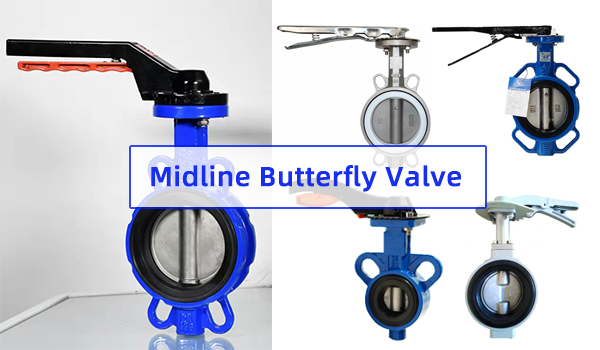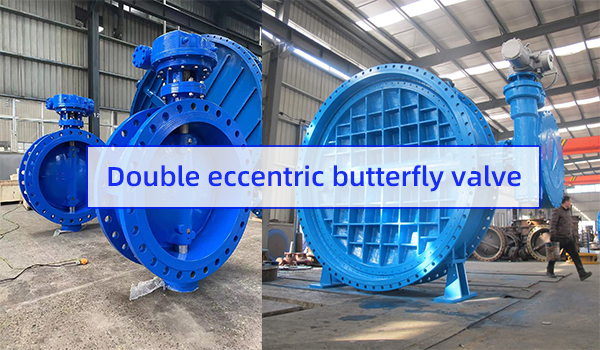- Gate valve
-
- DN1000 Extension stem double flange soft seal gate valveDIN F4 resilient seated gate valveDN450-1200 Resilient Seated Gate ValveDIN F5 resilient seated gate valveSocket connection soft seal gate valveUnderground cap soft seal gate valveBS5163 rising stem soft seal gate valveHard seal gate valveAPI slab Gate ValveStainless steel flange gate valveWafer knife gate valvePneumatic gate valveSoft seal gate valveExtension stem gate valveUL/FM fire protection groove ends gate valveRising stem forged steel gate valvecarbon steel gate valveStainless steel threaded gate valveDIN soft seal gate valveANSI soft sealing gate valve 200PSICast iron gate valveBS resilient seated gate valve
- Butterfly valve
-
- DN900 pneumatic triple eccentric hard seal butterfly valveD643H Triple Eccentric Butterfly ValveD343H Hard seal butterfly valveMulti standard EPDM seated butterfly valveSingle flange butterfly valveDN2000 Double eccentric butterfly valveFlange butterfly valveLug butterfly valveWafer butterfly valve with handleWorm gear operated butterfly valveWafer lined fluorine butterfly valveStainless steel wafer butterfly valveStainless steel flanged butterfly valveThree eccentric flange butterfly valvePneumatic flanged butterfly valvePneumatic wafer butterfly valveTriple eccentric butterfly valve wafer typeWafer butterfly valve ULC approvedInflatable seat butterfly valveHigh performance butterfly valveGrooved end butterfly valveElectric soft seal butterfly valveFlange fluorine lined butterfly valveHandle aluminum butterfly valveWorm Gear Aluminum Butterfly ValveFull PTFE lined butterfly valve wafer typeOne stem no-pin wafer butterfly valveMulti standard aluminum stem butterfly valveStainless Steel wafer Butterfly ValveAluminium handle operated lug butterfly valveLever Operated Flange Butterfly ValveButterfly valve stemButterfly valve discButterfly valve seat
- Ball valve
-
- DN1400 top-mounted eccentric semi-ball valveFlanged three-way ball valveFully welded ball valveNatural gas ball valveHigh platform flange ball valve1 PC ball valveFixed ball valvePTFE seat flanged ball valveMetal seat ball valveAPI 6D ball valve3 Piece ball valveFull Bore 3 way ball valve L-Port3 Way T-Port ball valve2PC Ball valve female thread stainless steel
- Globe Valve
-
- API Carbon Steel Globe ValveBellows Globe ValveStainless steel flange globe valveStainless steel thread S type globe valveStainless steel thread B type globe valveCast Steel Globe ValvePiston Globe ValveWCB Carbon Steel Globe Check Valveelectric motorized control stainless steel SS316 globe valveBrass Globe ValveCryogenic Globe valveHT200 Globe ValveThreaded Stainless Steel Globe ValveGG25 Globe ValveANSI API Cast Steel And Stainless Steel Globe valve
- Check valve
-
- Rubber seal check valveDN800 Slow closing check valveDN800 Rubber Disc Check ValveButterfly Buffering Check Valvecheck valve with counter weightSilent Check ValveWCB Swing check valveSwing Check ValveSingle Chip Check Valve H74WStainless Steel Wafer Check ValveSwing Start Check ValveFoot check valveAPI Swing Check ValveDIN Flange check valveSingle plate check valveLifting Check ValveBottom ValveHammer Diminish Noises Check ValveWafer Check ValveWafer dual plate check valve
- Control valve
-
- Static Balancing ValveCage Guided Sleeve Globe Control ValveDN1000 Piston Flow Regulating ValveDN1600 Electric Actuator Flow Regulating ValvePneumatic Flanged Butterfly ValvePneumatic Wafer Butterfly ValveAngle Seat ValvePneumatic gate valveElectric three-way control valveElectric sleeve control valve
- Water Meter
-
- Vertical Type Water MetersStainless steel threaded water meterPiston water meterPlastic water meterMore flow rotor dry water meterspiral vane flange water meterCI wotlman water meter with pulse outputLXCLG(R) Vertical removable element woltman cold (hot) water meterSingle flow rotor dry water meterPrepaid Token Water MeterElectromagnetic flowmeterRotary Piston Liquid Sealed Water MeterRotary Piston Liquid Sealed Water Meter
- Air valve
-
- Double ball exhaust valveDoubleair Air Valve SaudiDoubleair Air Valve Southeast AsiaDoubleair Air Valve South AmericaDouble Air ValveThreaded Air ValveSingle Air ValveTriple Functions Air ValveAutomatic Air Release ValveAutomatic release valveAutomatic exhaust valveComposite Exhaust Air ValveBrass exhaust valveDouble Ball Air Valve
- Pipe Repair & Coupling
-
- Flexible Multi-Function Pipe Coupling ZFJ-SSS Semi-Circle Pipe Repair Clamp SJW-HDuctile Iron Band Repair ClampStainless Steel Band Repair ClampDouble-Section Pipe Repair CouplingFolding Type Pipe RepairSingle-Section Multi-Function Pipe Coupling MF-SGear-Ring Type Multi-Function Pipe Coupling GR-SZBW Damping Corrugated Hose
- Dismantling Joint
-
- VSSJAFC(CC2F) Detachable Flange Transmission JointVSSJA-2(B2F) Double Flange Limited Expansion JointVSSJA-1(BF) Single Flange Limited Expansion JointVSSJA(AF) Flange Loose Expansion JointJGD-B Threaded Rubber JointZBW Damping Corrugated HoseKXT-S Flexible Dual-Spherical Rubber JointKXT Rubber Soft JointFlange Adaptor
What are the three types of butterfly valves?
Midline butterfly valve stem axis line and butterfly plate center plane in the same plane and with the valve body pipeline center line vertical intersection, and the butterfly plate two side area for the stem axis symmetry. Midline butterfly valve is generally made in the form of rubber lining, which is widely used in medium and small butterfly valves because of its simple structure, center symmetry (type I) bi-directional sealing effect, and smaller flow resistance and switching torque. But the shaft head is often in the friction state, wear faster than other parts, easy to leak here, so the rubber-lined butterfly valve is sometimes lined with teflon film in the shaft head to reduce friction or increase the spring to compensate for wear and so on. Obviously, the centerline type such as made metal to metal, to seal some difficulties, tilt plate and offset plate butterfly valve shaft head without friction, but their flow resistance and sealing torque are greater than the center symmetric butterfly plate.
(2)Double eccentric butterfly valve
Double eccentric butterfly valve, in order to improve the situation of single eccentric, the valve shaft is offset by a distance e, so that the line between the shaft center and the sealing point and the sealing surface is at an obtuse angle (more than 90°), so that there is no interference when sealing, and the more it is closed, the tighter it is, producing a greater sealing surface compression force. The feature of double eccentric is that when the valve is opened, the sealing surface of the butterfly plate can be quickly detached from the valve seat, and the contact scraping effect is greatly reduced, and it can be made into a metal sealed valve.
Double eccentric butterfly valves can be designed in the form of rubber, PTFE and metal hard seal. For example, C-shaped, O-shaped or U-shaped genus seal ring and other forms.
(3) Single eccentric butterfly valve
Single eccentric butterfly valve valve shaft deviates from the center plane of the butterfly plate to produce an eccentric h, so that the upper and lower ends of the butterfly plate against the valve shaft no longer become a rotary axis, eliminating the friction and wear of the upper and lower axis ends to produce leakage. The sealing effect is better, but the sealing effect is not consistent in both directions. Generally, the forward direction (flowing from the valve shaft to the sealing surface) is easy to seal, while the reverse direction is easy to leak because there is no supporting effect of the sealing surface. But the use of rubber soft seal, the use of its elasticity, can be very good to achieve a two-way seal. Since the sealing contact mechanism belongs to "ball in cone" (ball in cone), the butterfly plate always has two points that cannot be out of contact under each opening degree, and when used for adjustment, these two points will wear more than other parts, which will have a negative impact on the seal. If it is made into a metal hard seal, two positive cone fits, when turning the butterfly plate, the sealing surface will interfere and there will be difficulties in switching.










